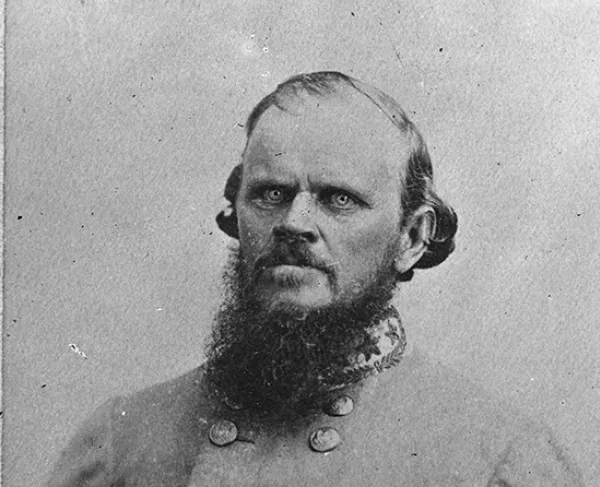Nathan G. Evans

Nathan Evans was born in South Carolina in 1824. After graduation from West Point in 1848, where his distinctive, spindly, knock-kneed legs caused his classmates to nickname him “Shanks,” Evans served with distinction against hostile Plains Indians in the 2nd US Cavalry, rising to the rank of captain. He resigned his US Army commission in 1861 to join the Confederacy. At First Manassas, exposed on the extreme left of the Confederate line, at the Stone Bridge, by Irvin McDowell’s flanking maneuver over Sudley Springs Ford, Evans turned his vastly outnumbered brigade to oppose the unexpected Union crossing of Bull Run. Evans’s Brigade delayed the flanking Union columns long enough for Generals P.G.T. Beauregard and Joseph E. Johnston to shift sufficient forces from the Confederate right to meet McDowell’s flank attack, eventually securing a Confederate victory. While in command of Confederate forces at Leesburg in 1861, Evans’s deft handling of his brigade during the Battle of Ball's Bluff led to an overwhelming Confederate victory, earning him a promotion to brigadier general. He went on to serve at Second Manassas, Antietam, the Vicksburg Campaign, and in various engagements in the Carolinas.





